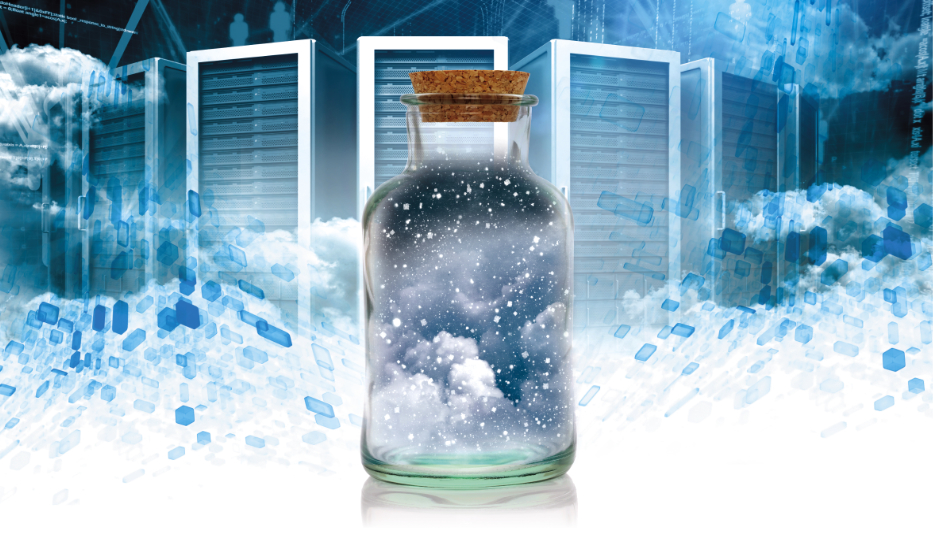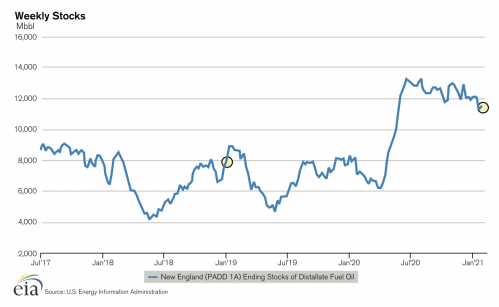All
On Polar Vortices, Pandemics and Preparation
by Richard Rutigliano, President, PriMedia, Inc.

How heating fuel dealers can handle this “perfect storm” and the next one
Thanks to my handy-dandy crystal ball — and publishing cycles — I find myself writing an article about a polar vortex that is just settling in, and you are reading this article after that weather event has moved onward. Of course, my prescience is based on experience – this certainly is not our first stretch of cold weather!
Even though the term “polar vortex” has been popularized in the past decade, it was coined back in 1853. These disturbances in the atmospheres in the North and South Poles occur every couple of years, sending waves of Arctic air across the country – or the entire northern hemisphere. Most recently, we had the 2019 and 2013/2014 polar vortices (not to mention 1989, 1985, 1982 and 1977), with a bomb-cyclone or two thrown in for good luck.
It is probably safe to predict that during the middle of February 2021 your business was stretched to its limits with record-breaking fuel delivery orders and emergency no-heat calls. Your employees – from CSRs to service techs – worked long shifts, and some customers still complained about having to wait – for the phone to be picked up, for a delivery to be completed, for a service call to be scheduled, for a part to come in, etc.
But like everything else in the last 12 months, this year’s polar vortex was complicated by COVID-19. Heating degree day calculations that were already twisted into knots from remote school and work schedules were twisted even further, service calls had to include safety protocols that extended each visit by precious minutes, and staff shortages from sick days lasted for weeks pending negative COVID test results.
(How close did I come to your company’s reality?)
Lessons Learned
The 2019 polar vortex is fresh enough in our minds to make many a fuel dealer wince. Propane and heating oil deliveries and service calls were pushed out for several days (or worse, weeks) as retailers prioritized automatic delivery and service agreement accounts. Those businesses with strong customer relationships weathered the storm (literally) and reported higher levels of customer satisfaction when it was over. On the other hand, we also heard some horror stories about companies that simply shut off their phones and left customers wondering when (or if) the much needed fuel would arrive!

The distillate stocks supply for PADD 1 New England was in a much better position as we faced the 2021 polar vortex, with 11.5mb on hand compared to 7.9mb in January 2019. Therefore, this time around, any delivery delays were likely caused by sheer volume of calls per day. Hopefully you and your staff took heed of the lessons from 2019 and:
- were honest and forthright with your customers about any anticipated delays
- used pop-up windows on your website
- posted updates on social media
- paused any promotions of “same day emergency deliveries”
- seized the opportunity to enroll customers in automatic delivery and service plans
Remember When…
Way back in November/December 2020, my article, “Looking Forward to 2021,” recommended that fuel providers update their customer experience with expanded online services, additional communications strategies, and integration of remote service calls. I hadn’t been foretelling the future on purpose; these were simply good business practices that took the “new normal” into consideration. As the Arctic air swept across the country, however, those recommendations took on additional urgency.
Enhancing a fuel provider’s website with a remote service call option gives the company the tools to assess their customers’ service issues. These systems use the common videoconference apps that jumped in popularity during the pandemic because they let quarantining seniors visit with beloved grandchildren. Suddenly these apps were not some “new-fangled technology” to be feared but lifelines that were easy enough for the slowest of late-adopters to grab onto.
Fuel companies can now review customers’ complaints, walk them through standard troubleshooting procedures, get images, and be better prepared if they go to the home. As a pandemic resource, remote service calls limit face-to-face interactions. When your service team is buried under no-heat emergencies during a polar vortex, remote service calls cut down the number of onsite visits and shorten those that need to be scheduled, enabling technicians to get to more homes during their shifts.
That article also recommended increasing communications — via email, text messaging, social media, and website pop-ups — to remind homebound customers that your company was still on the job, to outline the safety precautions that you had implemented, and to ask customers to notify you about household changes that could affect their usage patterns. During a polar vortex, these same communications can alert customers of any service delays and reassure them of your commitment to get there as quickly as possible.
The final suggestion from my earlier article was to review your website and the overall user experience and take the steps needed to increase online services as well as freshen up the design, navigation and content. The uptick in site traffic that began with regional shutdowns has continued, many businesses are still working remotely or on split shifts, and online services — especially online payments and account management — free up office staff to handle weather-related emergencies.
Prepare Now for What’s Next
Strong marketing and communications strategies support your business goals through a pandemic, through polar vortices, and any other challenges that might arise. If you followed up on these ideas before the New Year, you already had them in place before the 2021 polar vortex hit.
So, the question for you right now is: Do you want to be prepared for the next crisis or struggle to manage your operations? Taking action now puts you in the driver’s seat. You can have the tools in place to increase communications, customer satisfaction and service levels — or you can choose to “wait until next year” and hope there isn’t a blizzard, cold snap, supply snafu, manufacturer recall or other disruption before then.
Richard Rutigliano is President of integrated marketing and communications firm PriMedia, Inc. He can be reached at 516-222-2041 or rrutigliano@goprimedia.com.
Related Posts
 It’s Upgrade Season. Get the Sale.
It’s Upgrade Season. Get the Sale.
Posted on October 16, 2025
 Your Business Rises and Falls by Your Customer Service
Your Business Rises and Falls by Your Customer Service
Posted on September 19, 2025
 Teamwork Makes the Dream Work!
Teamwork Makes the Dream Work!
Posted on August 18, 2025
 Keeping Your Price Protection and Budget Plans Safe in a Volatile Market
Keeping Your Price Protection and Budget Plans Safe in a Volatile Market
Posted on July 28, 2025
Enter your email to receive important news and article updates.
